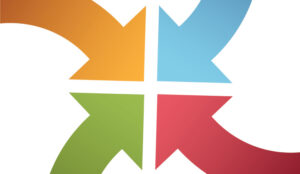Richard Correia of NICE discusses four contact centre solutions that made major contributions during the pandemic.
It’s been an amazing few months. Countries around the world closed down their economies as a means of fighting the COVID-19 pandemic. Social distancing has proven to be the most effective tool for combating a virus without a cure or vaccine.
Life has changed dramatically, and a “new normal” will be established as the world reopens.
As the business world came crashing to a halt, one country at a time, like cascading dominoes, many companies either closed down or sent employees home to work.
One contact centre after another faced this challenge and, in a matter of days, figured out how to send anywhere from a few to thousands of employees – agent, supervisors, managers and analysts – home to work.
This was necessary because contact centre employees are essential in times of trouble, sometimes being the only resources available to assist customers who had nowhere else to go for help.
Given the complexity of contact centres, it’s impressive how quickly and effectively many companies became fully operational with work-at-home employees.
In general, companies with cloud-based contact centre systems found it easier to transition their staff and operations, but many with on-premise automatic call distributors (ACDs) and diallers were also able to make it happen.
There are many lessons that companies are learning from this pandemic, although it’s still too early to fully appreciate the impact and figure out what changes will be needed to establish the “new normal.”
One thing we’ve already seen is the contribution that four contact centre solutions, in particular, have made in enabling contact centre employees to work from home: contact centre as a service (CCaaS) solutions, and the self-service intelligent virtual assistants (IVAs), speech analytics and workforce management applications.
All four of these solutions are enabled by machine learning capabilities and are delivered from the cloud.
CCaaS solutions are ACDs and diallers delivered from the cloud, which means that the solution does not care where a transaction is delivered – it could be to an office or an agent’s home.
Agents need to have a computer and headset and the bandwidth to support the traffic. CCaaS solutions are accessed via secure sign-in and can be managed remotely. And, if necessary, a company can ask the CCaaS vendor to provide expert assistance.
Self-service solutions have also been very helpful during the pandemic; this especially true for companies that have received high call volumes and others that have had to furlough agents because business was so slow. Companies that were using the new generation of IVAs that come with tools to allow business users to make changes without the assistance of IT were in much better shape than contact centres with interactive voice response (IVR) systems that require programmers.
The flexibility allows contact centres to rapidly enhance and modify their self-service solution to address recently identified issues, instead of these calls having to be handled by agents.
Speech analytics is another unsung hero of the pandemic, as it is being used to identify the reasons why people are calling. Once the company knows this, they can update their self-service solutions as well as the knowledge bases accessed by agents and customers through the self-service applications.
When agents are working remotely, speech analytics is also an effective method for keeping track of how they are performing and when they need assistance.
The fourth contact centre application that is really helping contact centres during the pandemic is workforce management (WFM). Companies that have a mobile-enabled WFM solution can more easily modify agent schedules to address their work-at-home (WAH) employees’ needs.
Many agents have children at home and have not been able to comply with their standard office schedule. Knowing what needed to be modified and being able to rapidly request additional hours through WFM has helped contact centres address unexpectedly high call volumes.
Of course, this also presents a few new challenges, including the need to allow agents to use their cell phones, which some companies view as a security issue.
There are many other contact centre solutions that have performed well during these difficult times, but these four will go down as outstanding performers that made major contributions during the pandemic.
When things calm down, all contact centres should evaluate their business continuity plans, including a review of all of their operating systems. DMG suggests paying special attention to these four solutions, as they have proven their value in good and difficult times.
Author: Robyn Coppell
Published On: 29th Jun 2020 - Last modified: 30th Jun 2020
Read more about - Guest Blogs, Coronavirus, NICE






































